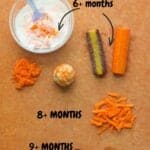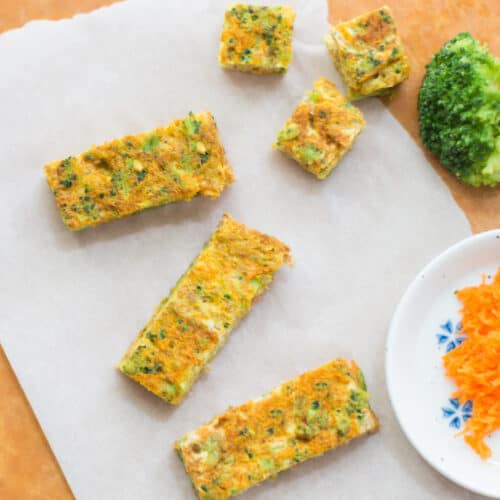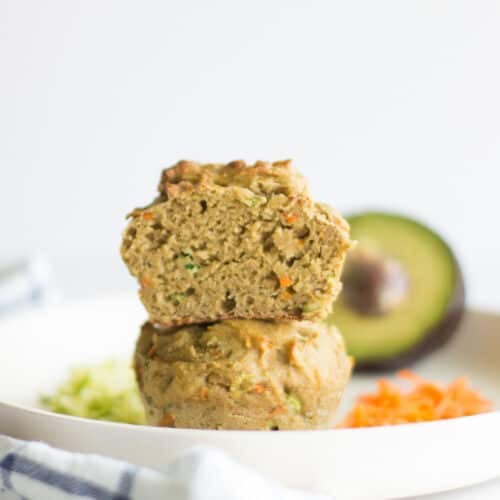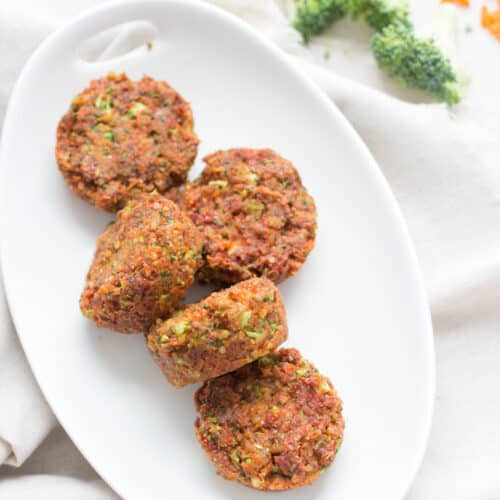This post may contain affiliate links. Please see our disclosure policy for more details.
Carrots are the perfect finger food for babies. Here’s how to cook it as well as serving suggestions for 6 months and up.
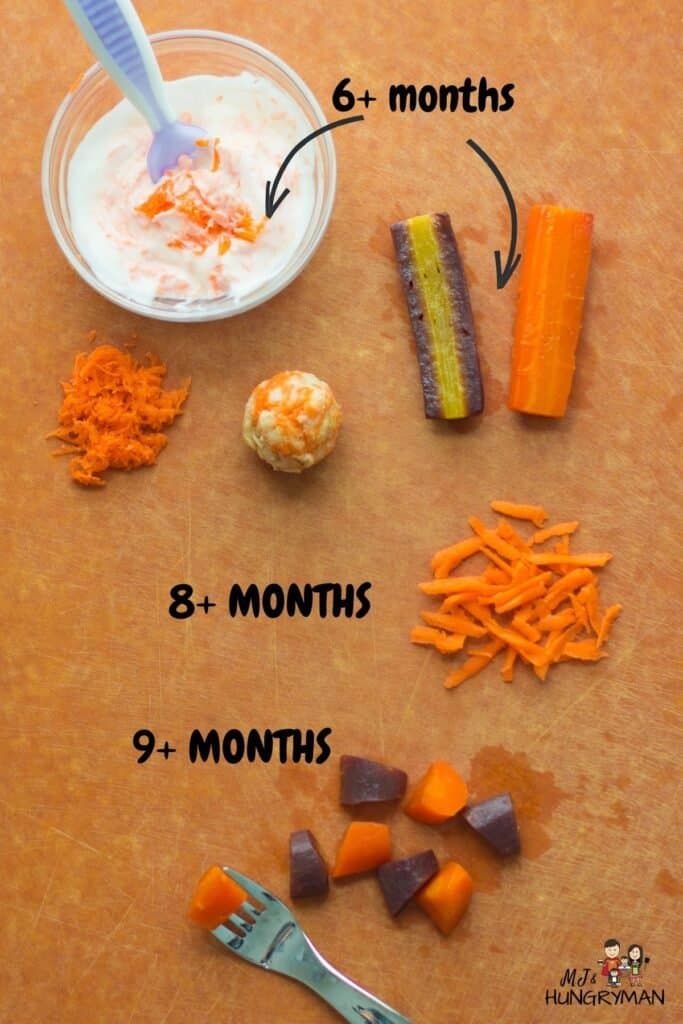
Table of Contents
When can babies eat carrots?
This nutritious vegetable can be offered to babies as soon as they’re ready to start solids, usually around 6 months. It’s important to remember that your baby is unique and that rather than going by the calendar, you need to make sure your baby is DEVELOPMENTALLY ready to start solids.
If you’re unsure, be sure to grab my FREE handout!
Health Benefits
Just like sweet potatoes, carrots are one of the best food sources of beta-carotene. Once consumed, the body converts it to vitamin A, which is key for good vision, cell growth, and a healthy immune system.
They are also a good source of several B vitamins, vitamin K, potassium, and fiber.
They come in different colors and are all wonderful to introduce to your baby. They contain similar vitamin and mineral content, but where they differ is their antioxidant profile.
The orange-fleshed ones are rich in carotenoids whereas the purple varieties are rich in anthocyanins. White-fleshed carrots have the lowest amount of antioxidants.
Are carrots safe for babies?
Raw carrot sticks and baby carrots are choking hazards, so it’s important that they are offered in an appropriate size and texture. Let me show you how! It is also not a common allergen.
Note that carrots (organic and conventional) contain arsenic and other heavy metals that are found in the soil and water. While this may be concerning, it’s nearly impossible to avoid these contaminants. So DON’T stop offering!
Just like with rice, as long as you are offering a wide variety of foods and not serving carrots all the time, there’s no need to worry.
Cooking Methods
Here are the two best cooking methods for babies. It’s VERY important that the vegetable is cooked until soft enough to be easily smooshed between thumb and forefinger.
I personally don’t recommend roasting carrots for this age as the exterior of the vegetable can get too crispy or even burnt before it softens. You can boil, but I don’t recommend it as most of the nutrients will leach into the water.
In regards to size, cut into big strips. Once cooked, you can cut into smaller pieces depending on your baby’s age. This way you can serve both big and small pieces as I suggest below.
Steam
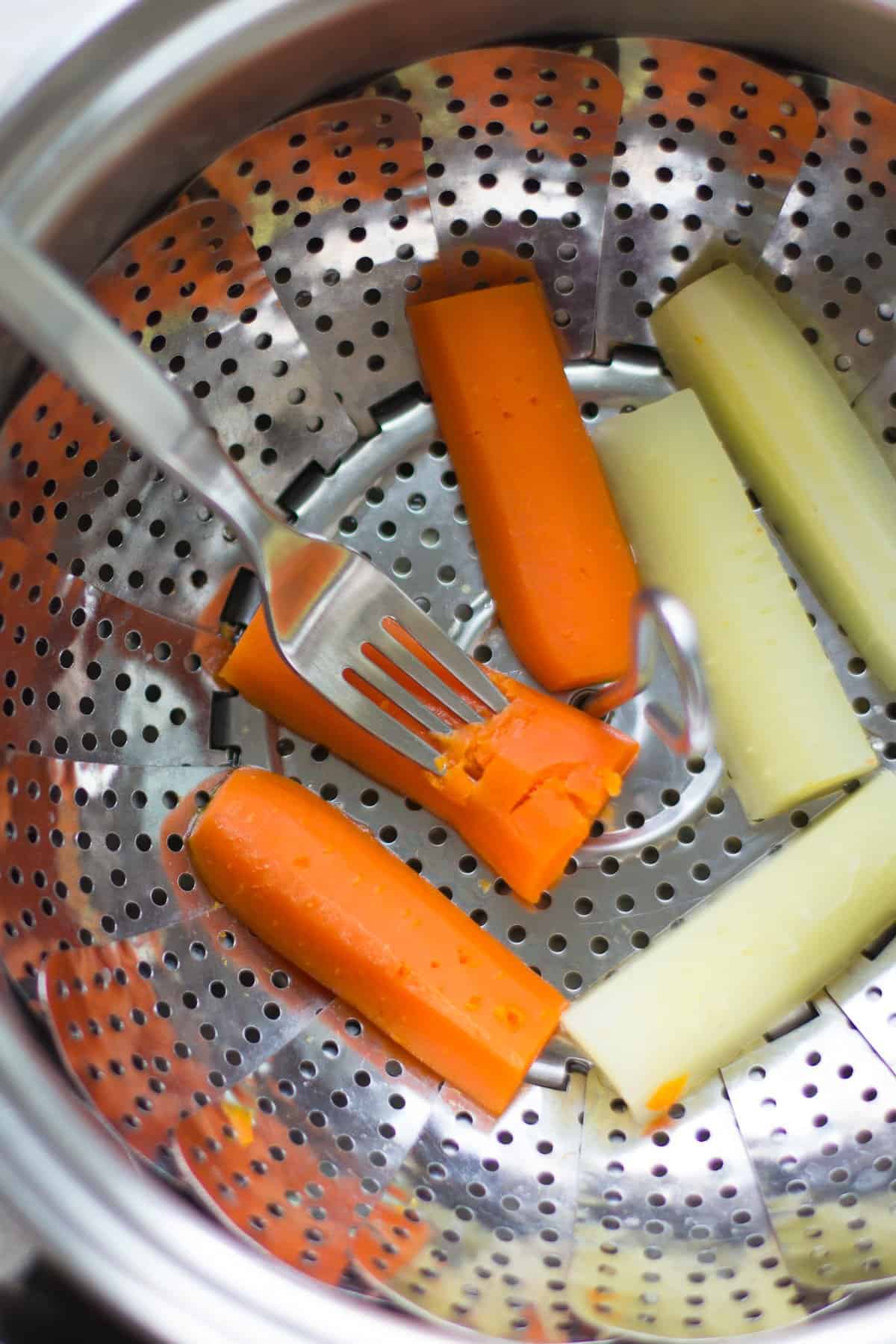
Place water in a pot, add steamer basket, and bring to a boil. Add carrots, cover, reduce heat to medium, and cook for 15-20 minutes. It should be easily pierce-able with a fork.
Steam roast
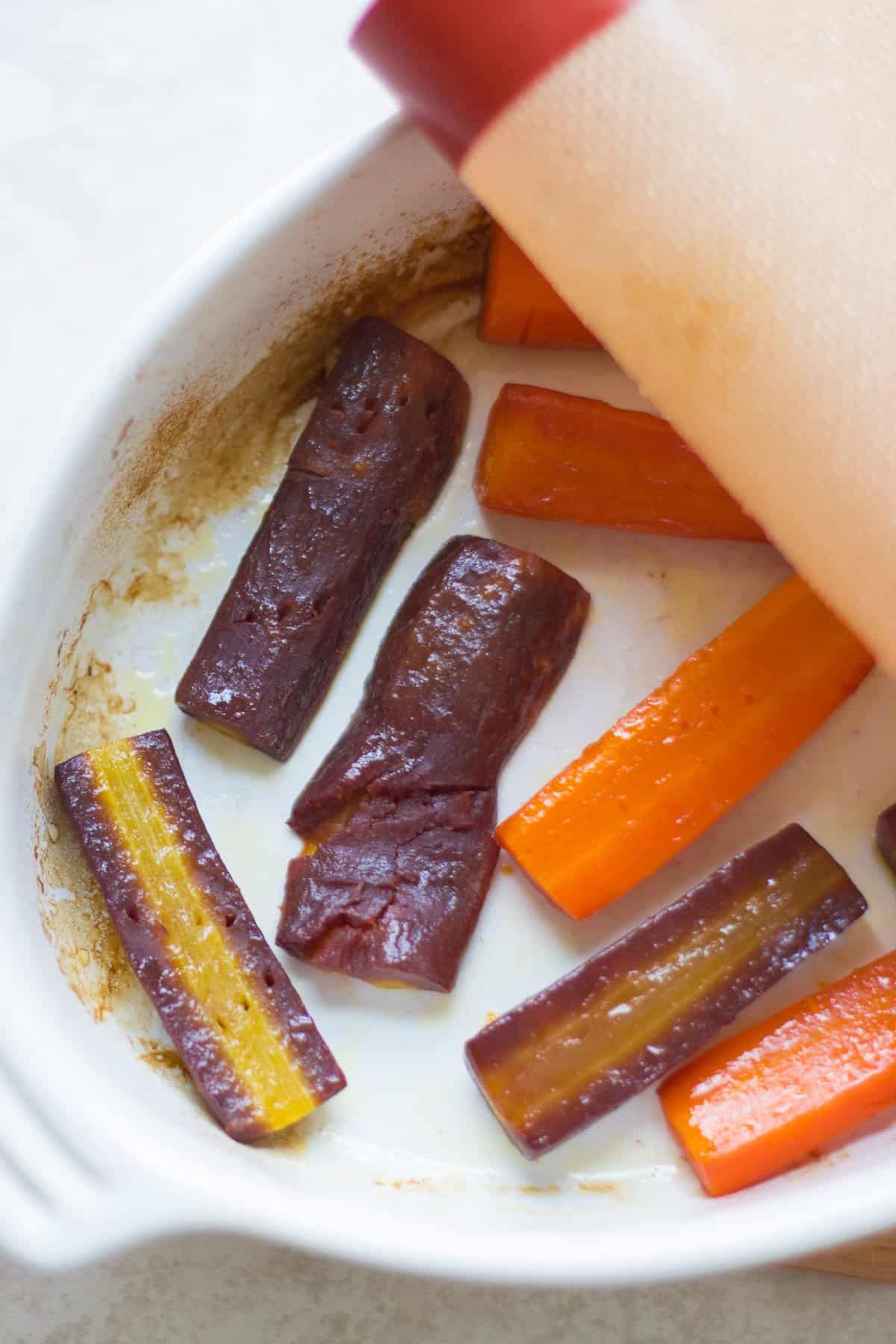
This method is my personal favorite! If you are new to this cooking method, there is no need to feel intimidated. It’s SO easy to do, and much more flavorful than plain steaming.
Plus you can toss the carrots with oil, which will aid in the absorption of vitamin A, a fat-soluble vitamin.
How it works:
The hot oven and moisture from the veggies create steam (once covered) making them soft, but because they’re roasted, the flavors become more concentrated.
Simply add carrots to a baking pan, toss with oil and seasoning(s) of choice, COVER, and roast at 425°F for 15-20 minutes! Perfectly soft and flavorful!
It’s ok if they overlap a little bit. It will create more steam resulting in softer carrots.
Learn more about steam roasting as well as cooking times for ALL other vegetables
How to serve for Baby Led Weaning
6+ months old
Pureed – Add cooked carrots into a blender and blend until smooth. Add breastmilk/formula, water, or even broth to thin out to desired consistency.
To make it even more flavorful, try this creamy carrot pasta sauce or carrot hummus!
Mashed – Whether you are advancing in texture after doing purees or starting with baby led weaning, this is such an easy and versatile way to serve carrots to your baby.
Finely grated – I like to use a lemon zester or the smallest hole in the box grater.
You can add mashed or finely grated carrots to:
6-9 months old
Bigger is better and safer at this age so your baby can easily grab the food with their palm and bring to mouth.
Cut into big strips (at least 1 inch in width). Again, the carrots should be easy to smush between your thumb and forefinger.
Once your baby has had more experience with texture, you can try offering shredded carrots by using the small or larger hole on the box grater.
Examples
These are actual plates that I served to my daughter at this age. If interested in learning more, check out my 3 month meal plan.

- A big carrot strip + Quinoa carrot ricotta fingers + yellow squash
- Add to baked goods: Veggie chickpea sticks (from my Beginner Bites cookbook) + broccoli
- Chop and add to any family meals
- Add finely grated carrots to other foods: Overnight carrot cake oats
9+ months old
As your baby develops their pincer grasp and is able to pick up small pieces of food using their thumb and finger, you can cut into small, bite-sized pieces. I still suggest continuing to offer larger pieces so they can practice taking bites.
I emphasize this because my son was the ultimate shoveler, and cutting into small pieces only made it worse. With my second baby, I offered her large pieces along with bite-sized pieces, and it’s definitely helped her to slow down and to take bites rather than shovel.
If you haven’t already, this is a good time to introduce utensils. Your baby will most likely just play around or toss it. But it’s still great for exposure!
Try forking a piece of carrot and plate on their plate. Be sure to continue modeling. They are like sponges and learn by watching you!
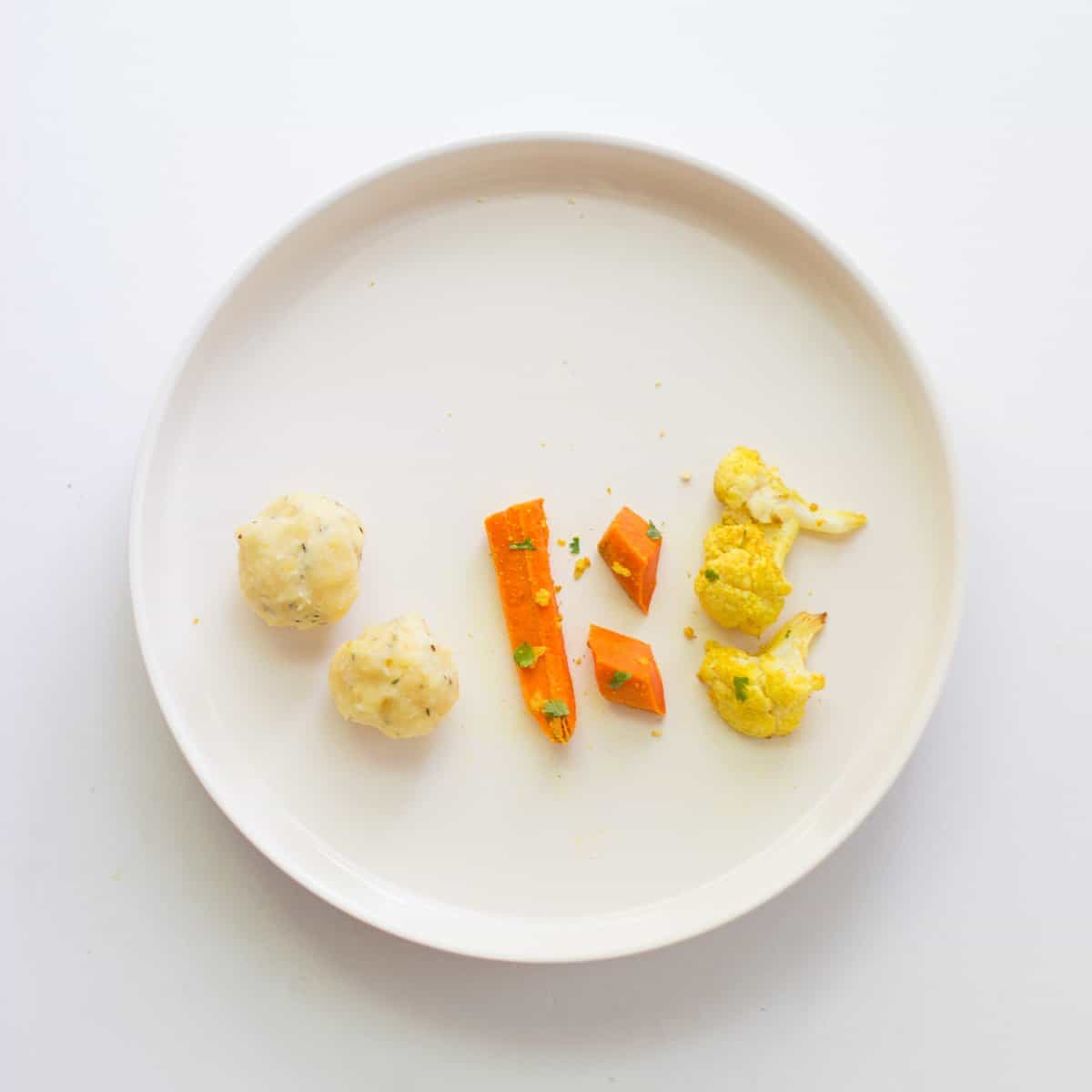
Pictured: lentil balls with Indian Spiced Roasted Cauliflower and Carrots
Frequently Asked Questions
It can do to its high soluble fiber content. However, just like with broccoli and beans, you shouldn’t eliminate them completely.
If your baby is gassy but doesn’t seem to be in discomfort, there’s no reason to worry. If your baby is extra gassy after eating carrots, you can cut back on how frequently they are served.
There is no set timeline as to at exactly what age you should try offering them. That’s because every child is different. It depends on many different factors, such as the number of teeth and your child’s eating/chewing skills.
So be observant, stay close, and move forward as you and your child feel confident and ready. Here’s how to introduce raw vegetables to your toddler. 
Transfer to an airtight container and keep in the fridge for up to 5 days. Since they’re very soft in texture, I don’t recommend freezing them. If you have a lot of leftovers and want to invite more variety, add them to the recipes I suggest below!
I suggest reheating very briefly in the microwave. Otherwise, the carrots will get too mushy. I like to serve straight from the fridge or allow to come to room temperature.
Carrot recipes for babies
Breakfast/Lunch
If you want to learn how to prepare other specific food(s), check out my How To Series!

How to Cook Carrots for Babies
Equipment
Ingredients
- 2 medium carrots, sliced into thick strips
- 1 tablespoon oil (for steam roast)
- seasoning(s) of choice (for steam roast)
Instructions
Steam
- Place water in a pot, add steamer basket, and bring to a boil. Add carrots, cover, reduce heat to medium, and cook for 10-15 minutes. It should be easily pierce-able with a fork.
Steam roast
- Add carrots to a baking pan, toss with oil and seasoning(s) of choice. It's ok if they overlap a little bit. It will create more steam resulting in softer carrots.
- COVER with baking mat, and roast at 425°F for 15-20 minutes, until fork tender.

